These beautiful Sapphires were originally part of the same, much larger set. Separated after the 1848 Revolution, they were reunited under the previous claimant to the French throne only to be split up once more.
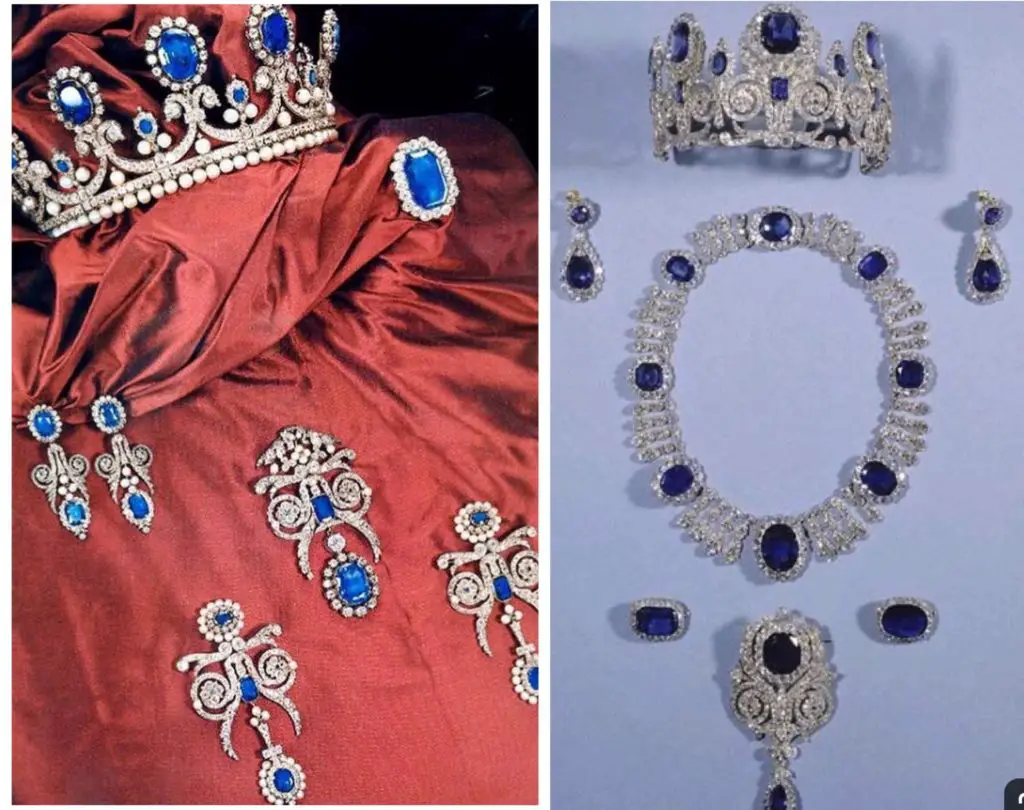


It is believed that the Sapphires in this collection, like many other French royal jewels that still exist today, were once owned by Empress Josephine, Napoleon Bonaparte’s first wife. Although the couple did not have any children, Josephine’s children from a previous marriage, Eugene and Hortense, were adopted by Napoleon. As a result of their new status, Eugene became the Duke of Leuchtenberg, and Hortense became the Queen of Holland. When Josephine passed away in 1814, her will stipulated that Hortense would inherit a share of her mother’s diamond collection, along with a parure of rubies and a parure of sapphires.
After a the events of 1815, Hortense was banished from France, taking her jewels with her.
In 1821, while living in exile in Italy, she sold the Sapphires to Louis Philippe, Duke d’Orleans. He then presented them to his wife, Marie Amelie of Naples and Sicily (niece of the last Queen of France, Marie Antoinette). When Louis Philippe became King of the French in 1830, the Sapphires became part of the French Royal Collection once more.
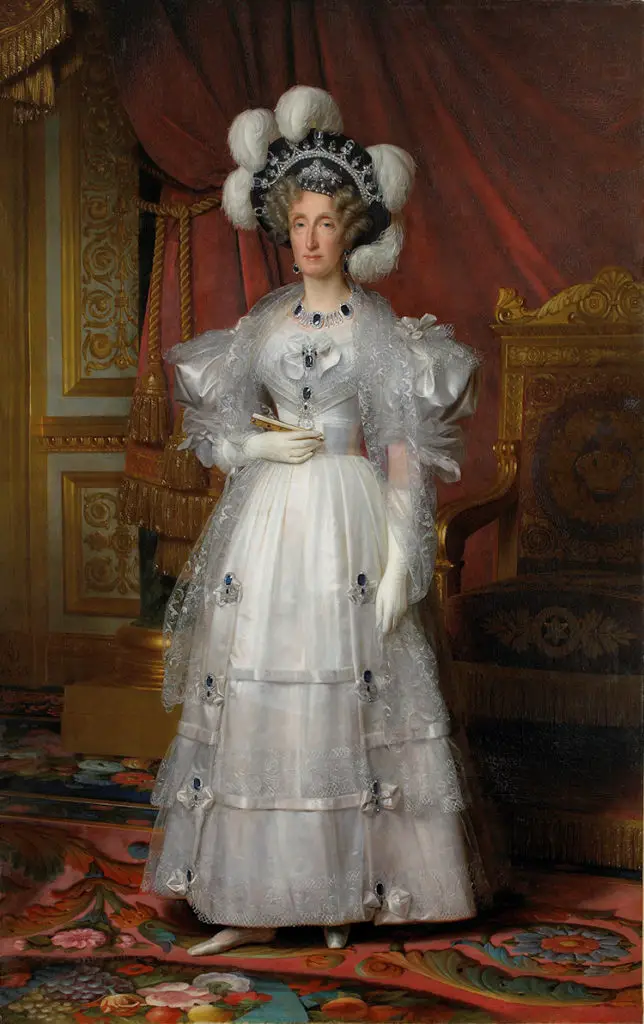
The sapphires were sent to the famous French jeweler, Bapst, to be remade into the grand set that Queen Marie Amelie wore for her portrait by Louis Hersent in 1836. The tiara she wore was set with diamonds, sapphires, and pearls, with upright sapphire and diamond clusters on a diamond and pearl base. This tiara would later become known as the Montpensier Tiara. The remaining sapphires were turned into a necklace, a pair of earrings, and several brooches, some of which were pinned to the front of Marie Amelie’s dress. These brooches would become the basis for the second sapphire parure, the Comte de Paris set.
According to jewellery historian, Vincent Meylan:
Originally the tiara had nine elements. Only five remain. A sixth one was used to make the brooch. The three last sapphire elements were added as brooches to another tiara to form a second parure which the queen gave to one of her sons. It is also possible that the necklace was modified. The square sapphires do not seem to fit with the other oval sapphires.


Following the French Revolution of 1848 and the establishment of the Second Republic, Marie Amelie and her family were forced to go into exile, along with her precious jewellery collection.
Over time, the two sets were divided amongst Marie Amelie’s descendants. The Diamond, Sapphire, and Pearl set was inherited by her youngest son, Prince Antoine, Duke of Montpensier. The Diamond and Sapphire set was given to her grandson Prince Philippe, Comte de Paris. In 1864, Prince Philippe married his first cousin Princess Marie Isabelle, and the sapphires were reunited once more.
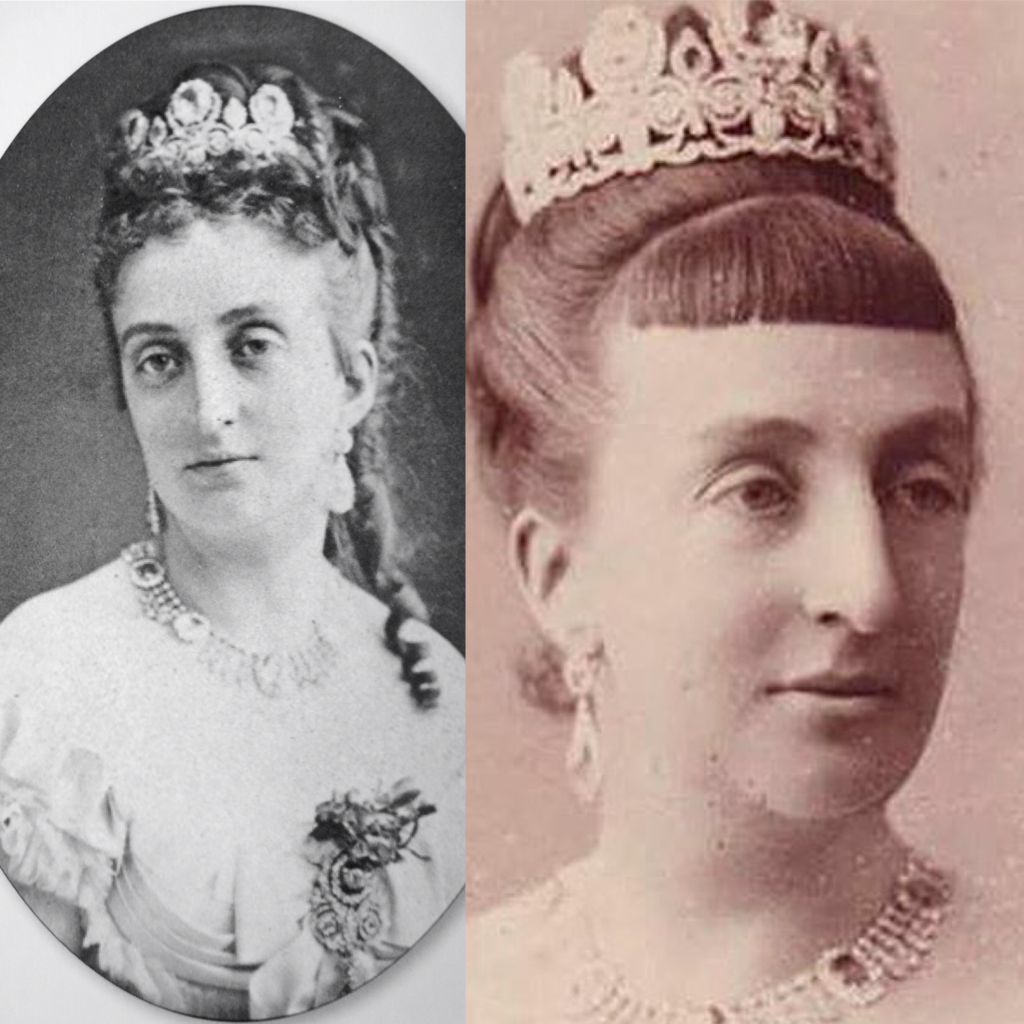
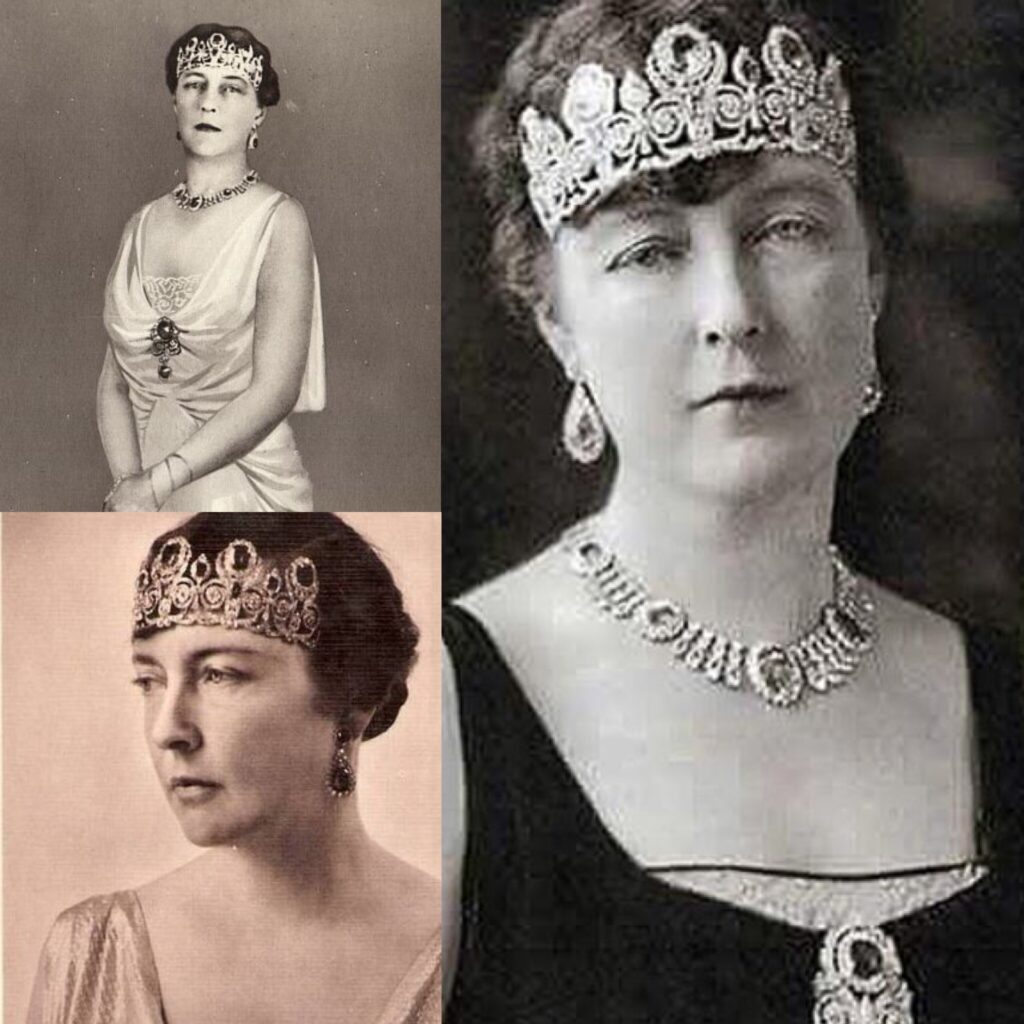
Their daughter Isabelle also married her first cousin, Jean, Duke de Guise. He had inherited the title Comte de Paris when Isabelle’s brother, Prince Louis Philippe Robert, died without legitimate children. During her time, Isabelle wore the tiara in the 1920s bandeau style.
Jean and Isabelle’s son Henri became the next Comte de Paris in 1940. When he married a member of the Brazilian Royal family, Isabelle d’Orleans-Braganza, she became the next custodian of the Sapphires.
Comtesse Isabelle wore the Comte de Paris Set frequently and lent the Montpensier Set to her daughter in law, Marie-Thérèse of Württemberg.








Unfortunately, Comte Henri spent most of the family fortune on his political causes and supporting his large family. He was eventually forced to sell both the Comte de Paris and the Montpensier set.
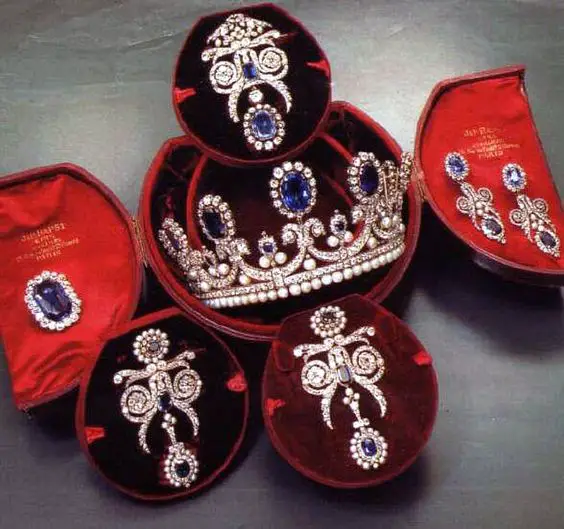
The Montpensier set (including its original display box from Bapst) was sold to a private buyer and its current location is unclear.
Luckily, in 1985 the Comte de Paris set was bought by the Louvre Museum where it can still be viewed and enjoyed by visitors today.



